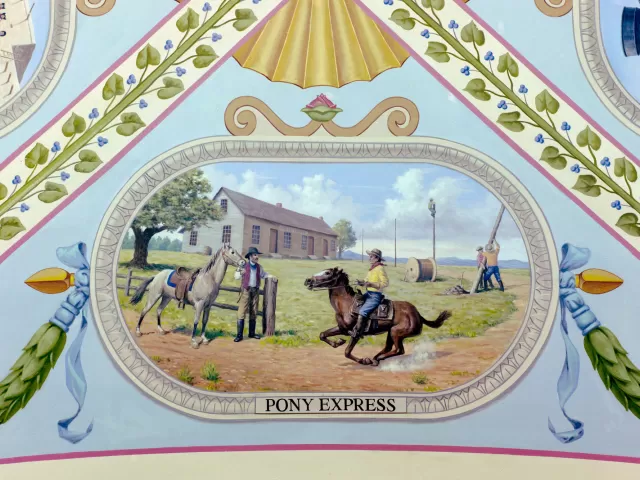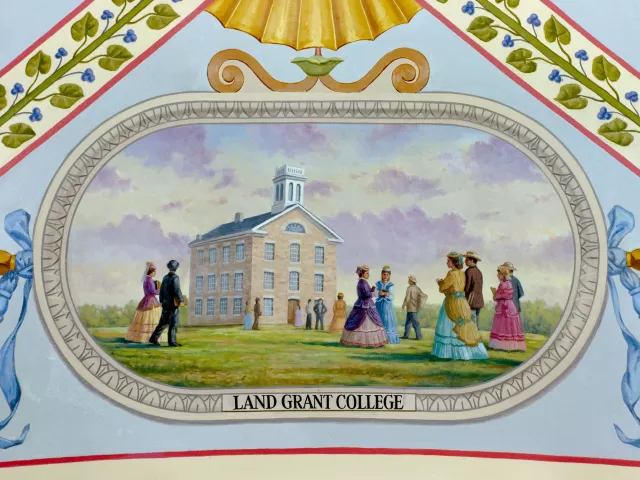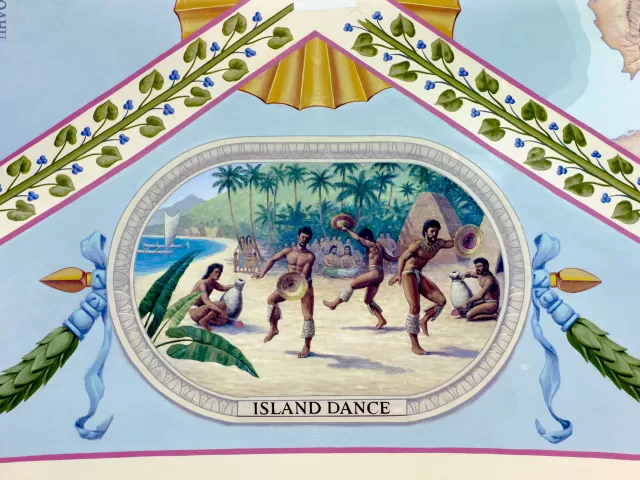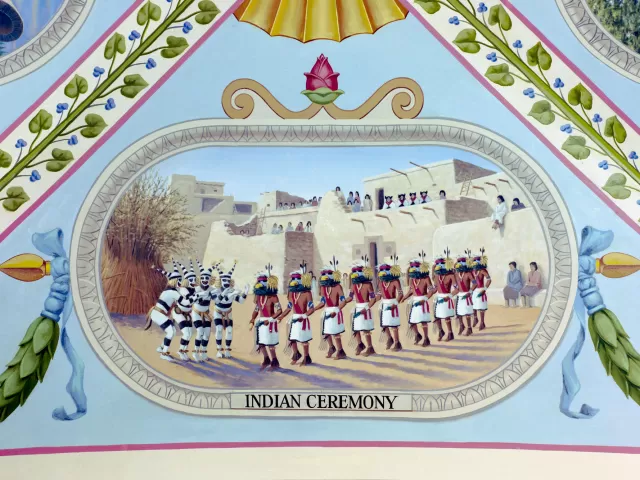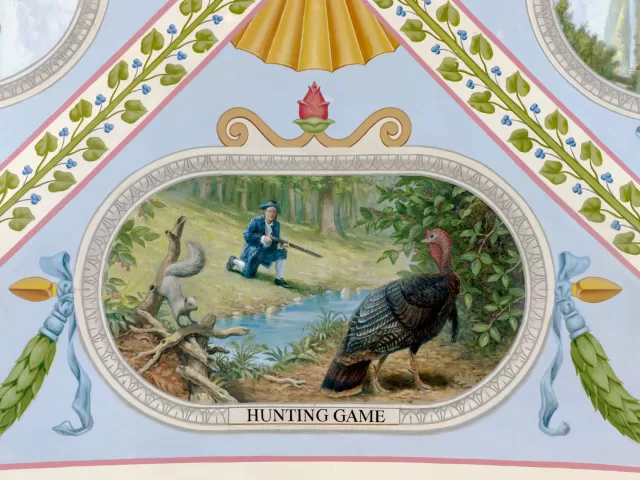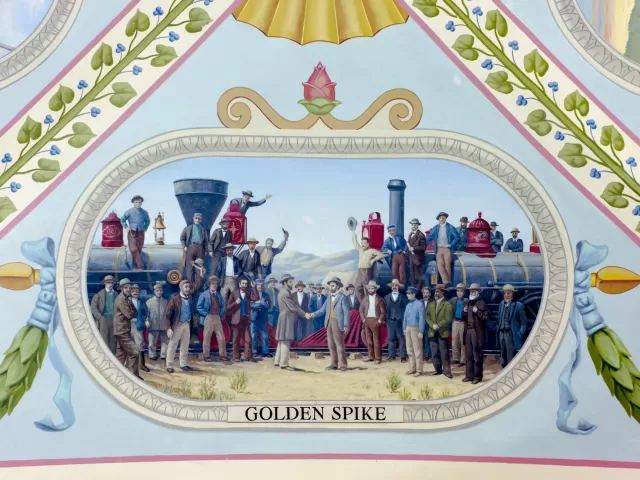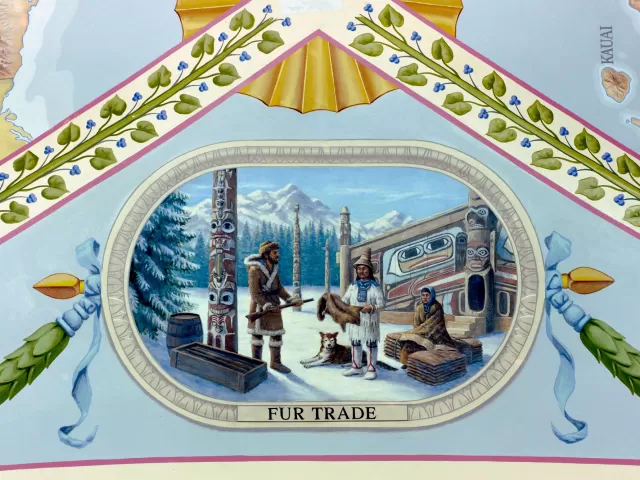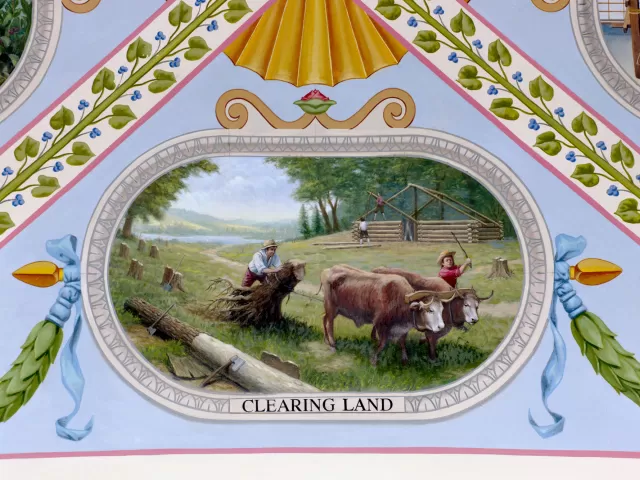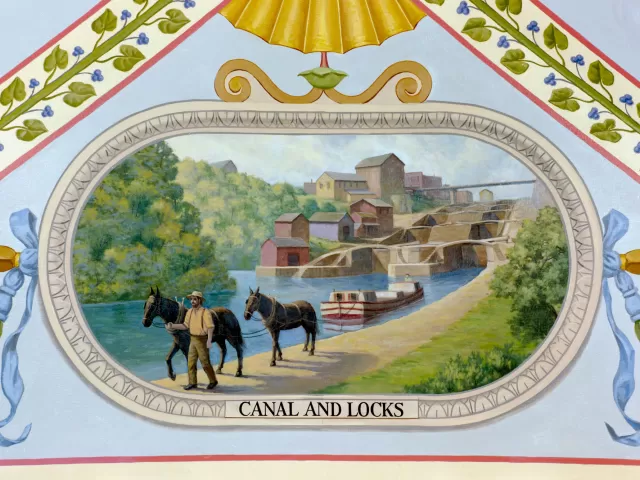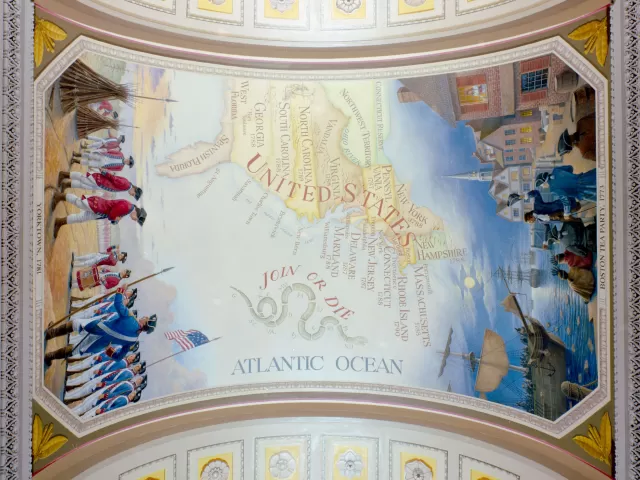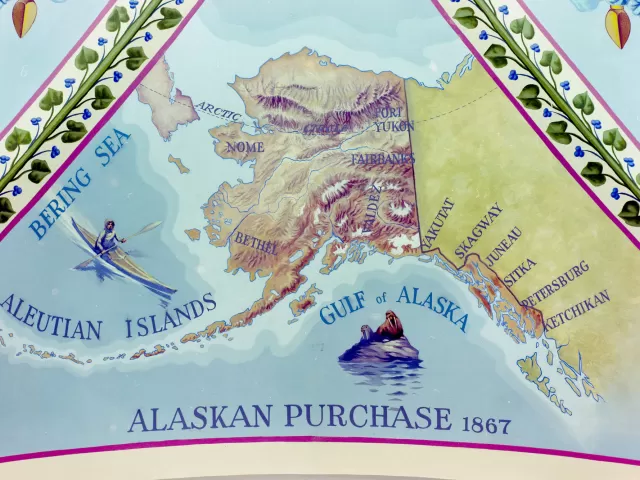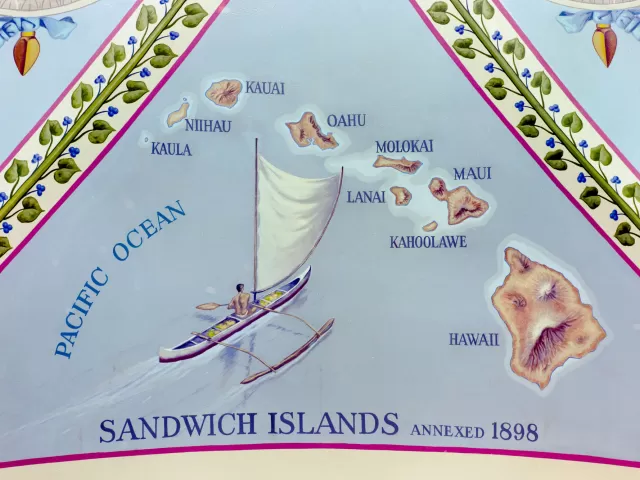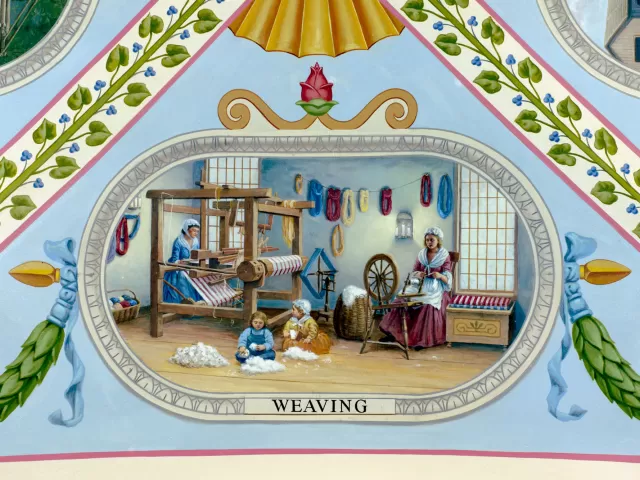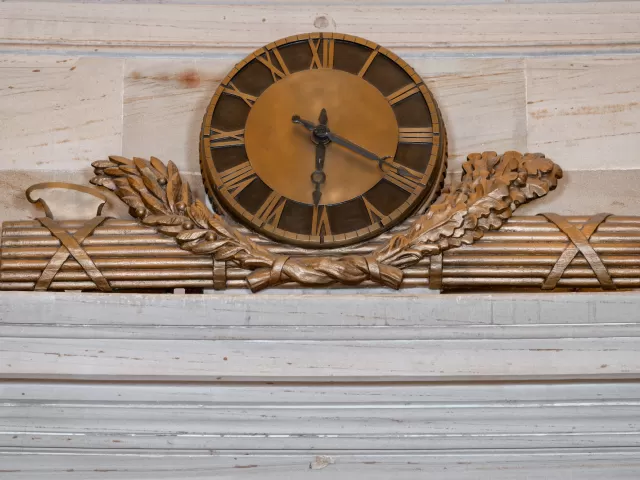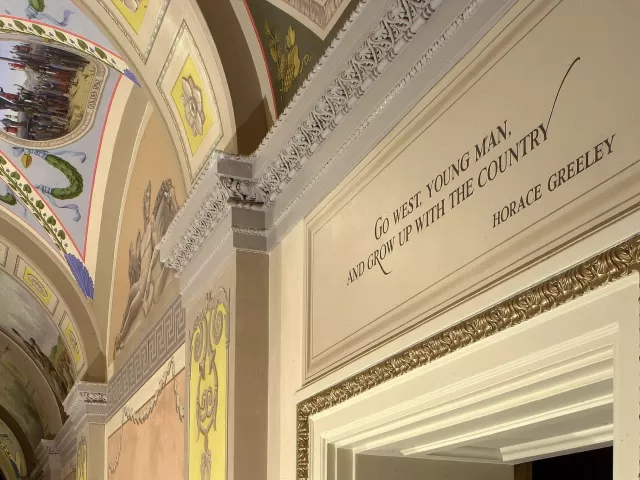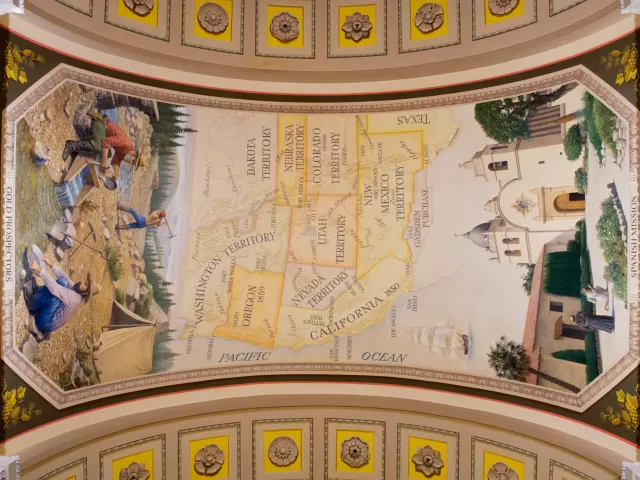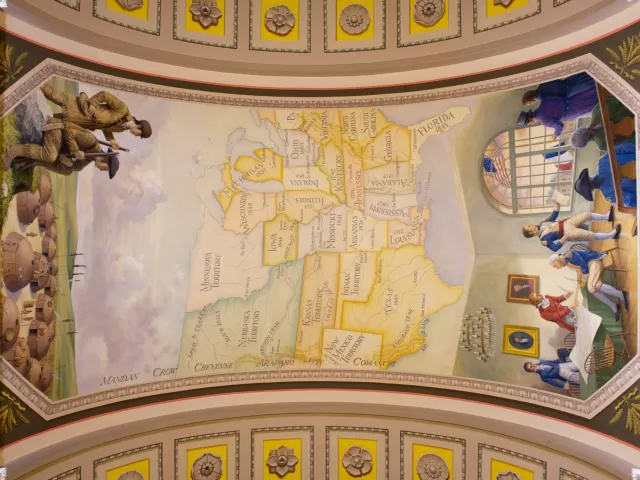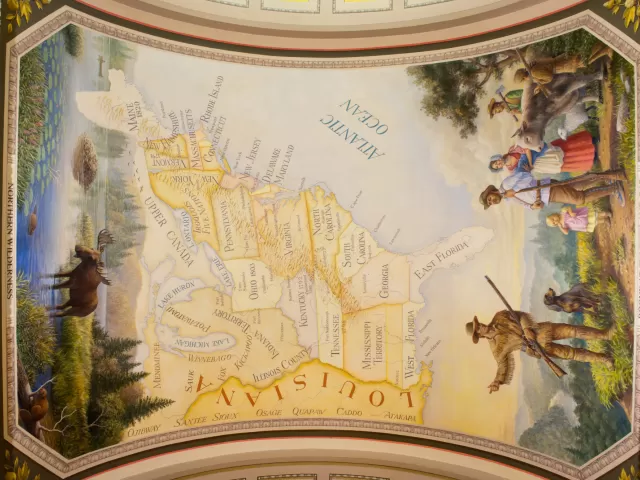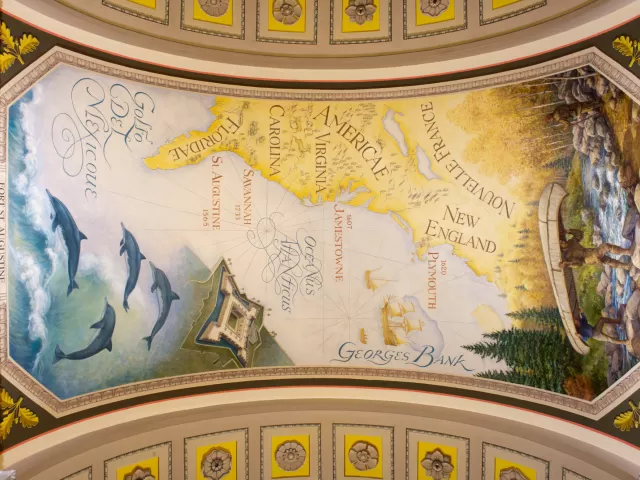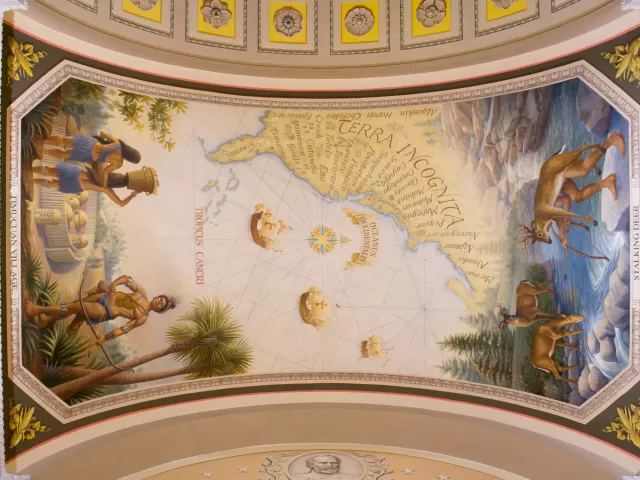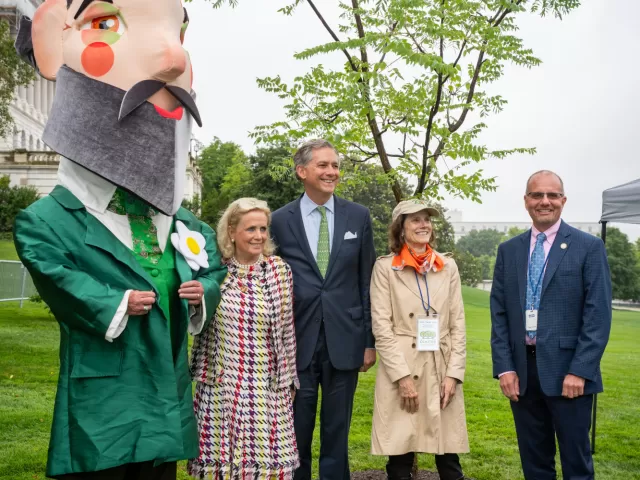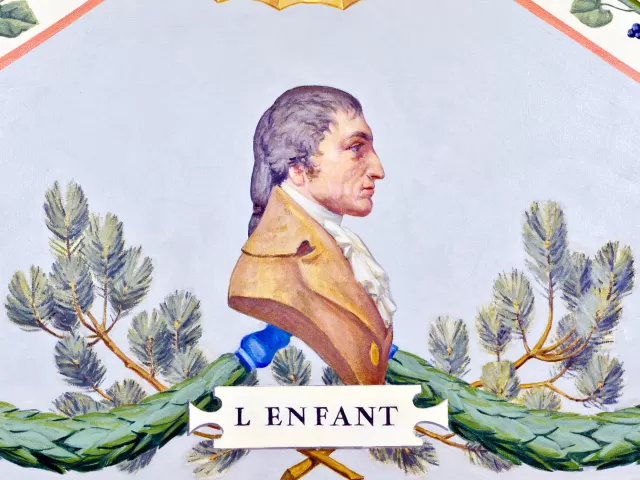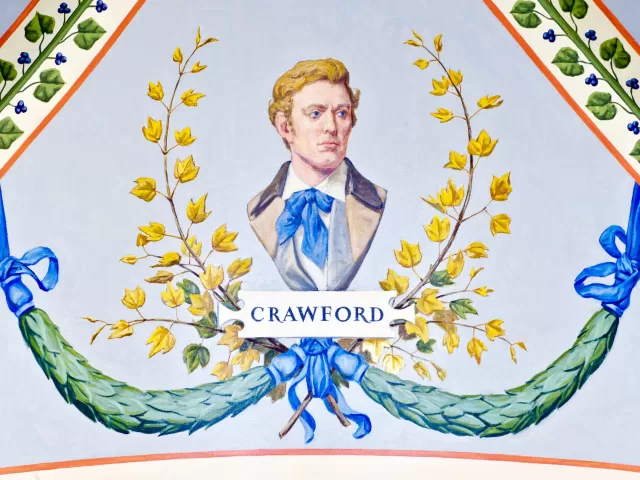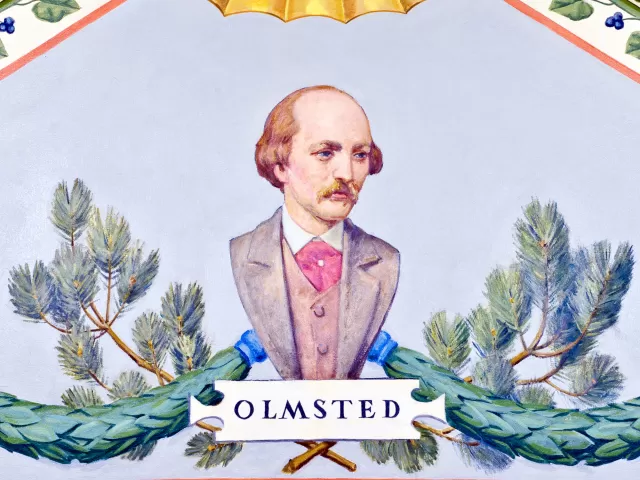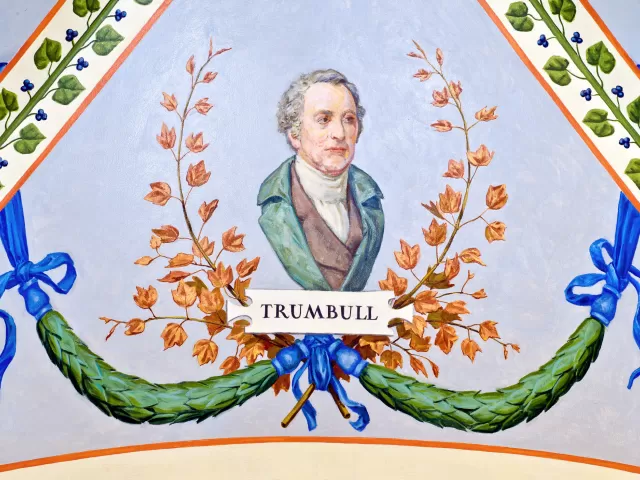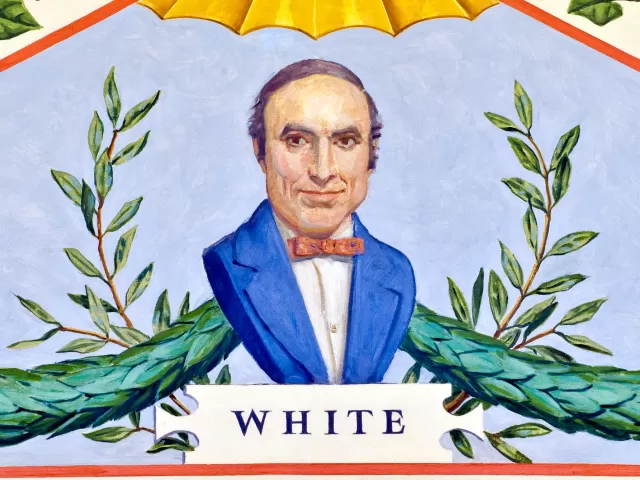Displaying 91 - 120 of 483 Clear
Highlight
A couple picks cotton in the south with their cabin behind them and the plantation house in the distance.
Highlight
Riders are shown at the Hollenberg station, readying to switch ponies. In the background workers string cables for the telegraph, which would soon replace the Pony Express.
Highlight
This college building in Kansas was one of the first created under the 1862 Morrill Act, which was meant to ensure higher education for all classes of Americans.
Highlight
A village celebration with dancers and indigenous percussion instruments is shown in a typical Hawaiian setting.
Highlight
An unusual combination of dancers in Hopi and Navajo costumes performs a ceremony.
Highlight
At the connection of the Union Pacific and Central Pacific railroads in Promontory, Utah, two locomotives meet and two men shake hands before a group of workers.
Highlight
A longhouse of the northwest is decorated with paintings and set amid totems. Before the building, a fur trader is trading guns to the Native Americans for furs.
Highlight
Representing the Great Banks and North Atlantic fisheries, this vignette depicts salt bins, a rod shed, and a pier; a three-masted ship is seen offshore.
Highlight
Two settlers use a team of oxen to remove the stumps of newly felled trees while, in the background, others build a log hut next to an inland river.
Highlight
Two different types of covered wagons are shown, along with livestock and a family of settlers cooking a meal over an open fire.
Highlight
Along the Erie Canal at Lockport, New York, horses are shown pulling the barges that have just gone through the locks.
Highlight
The map shows the first thirteen colonies and the year in which each entered the Union. The original Northwest territories, the Connecticut Reserve, and Spanish and West Florida are also shown.
Highlight
On this map of the lands, an Eskimo hunts in a kayak; nearby seal and walrus represent the fur trade as well as the subsistence of the indigenous people.
Highlight
A map shows the islands now called Hawaii, which were annexed in 1898; an island native carries fruit in an out-rigger canoe with a cloth sail.
Highlight
The craft is shown as a family operation, with children carding the wool, a young woman spinning it, and an older woman operating a loom.
Highlight
This bronze clock was installed in the U.S. Capitol Rotunda in 1965. Sculptor Lee Lawrie also designed two additional clocks for the U.S. Capitol.
Highlight
A list of some of the quotations and inscriptions found in the buildings on Capitol Hill.
Highlight
The map shows the states and territories stretching west from Texas to the Pacific Ocean and marks the Oregon, California, and Old Spanish Trails as well as the Pony Express route.
Highlight
The map shows the central section of the continent to illustrate the effect of the Louisiana Purchase (1803), the Lewis and Clark expedition, and the opening of the West.
Highlight
The map shows the states and territories between the Atlantic Ocean and the Mississippi River. Important cities (state capitals, trade centers, or otherwise influential in westward expansion) are indicated, and the names of Native American tribes appear to the north and west. The corner motifs are
Highlight
The map shows the first four settlements in America, from St. Augustine (1565) to Plymouth (1620).
Highlight
The map is inscribed "Terra Incognita" (Latin for "Unknown Territory"). On it, the names of the original Native American tribes of the eastern coast of North America appear in the tribes' approximate geographic locations.
Highlight
U.S. Capitol Grounds memorial tree to honor Frederick Law Olmsted Sr. sponsored by Rep. French Hill and Rep. Debbie Dingell.
Highlight
Pierre Charles L'Enfant designed the new federal city, Washington, D.C.
Highlight
Thomas Crawford designed the House and Senate bronze doors, the Senate pediment sculpture, and the Statue of Freedom that stands atop the U.S. Capitol Dome.
Highlight
Frederick Law Olmsted designed and carried out the landscaping of the U.S. Capitol grounds in the late 19th century.
Highlight
John Trumbull painted four scenes related to the Revolutionary War for the U.S. Capitol Rotunda.
Highlight
George M. White, who served as Architect of the Capitol from 1971 until 1995, constructed the Library of Congress Madison building, the Hart Senate Office Building, and the Thurgood Marshall Federal Judiciary Building.
Highlight
The extension of the U.S. Capitol's East Front and construction of the Rayburn House Office Building were highlights of Architect of the Capitol J. George Stewart's 1954-1970 term of service.

